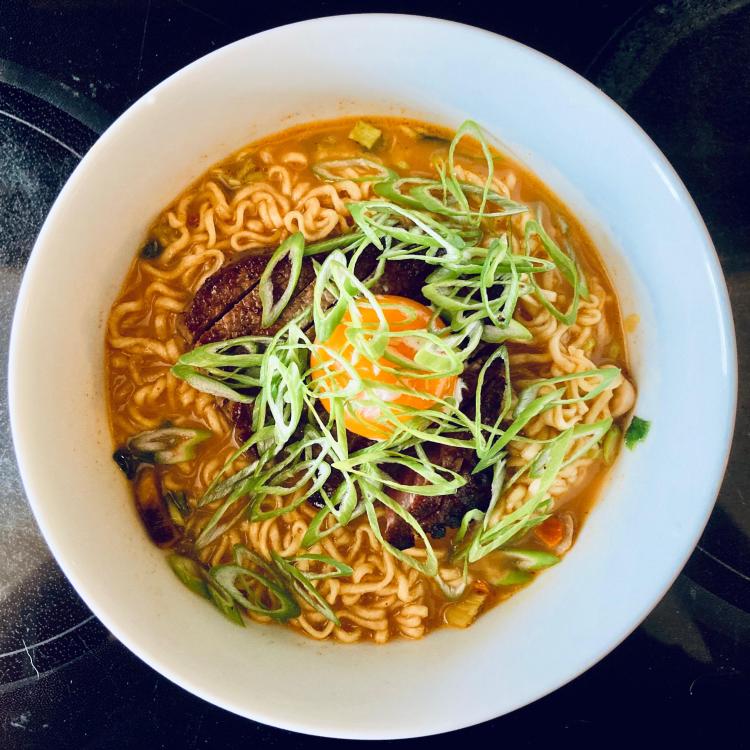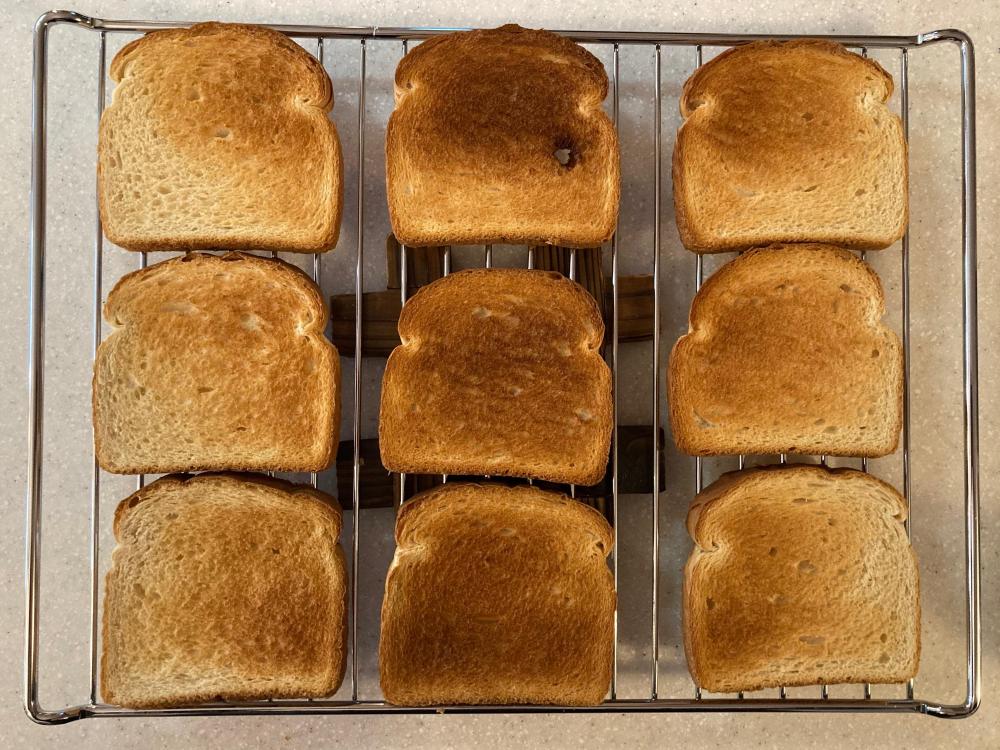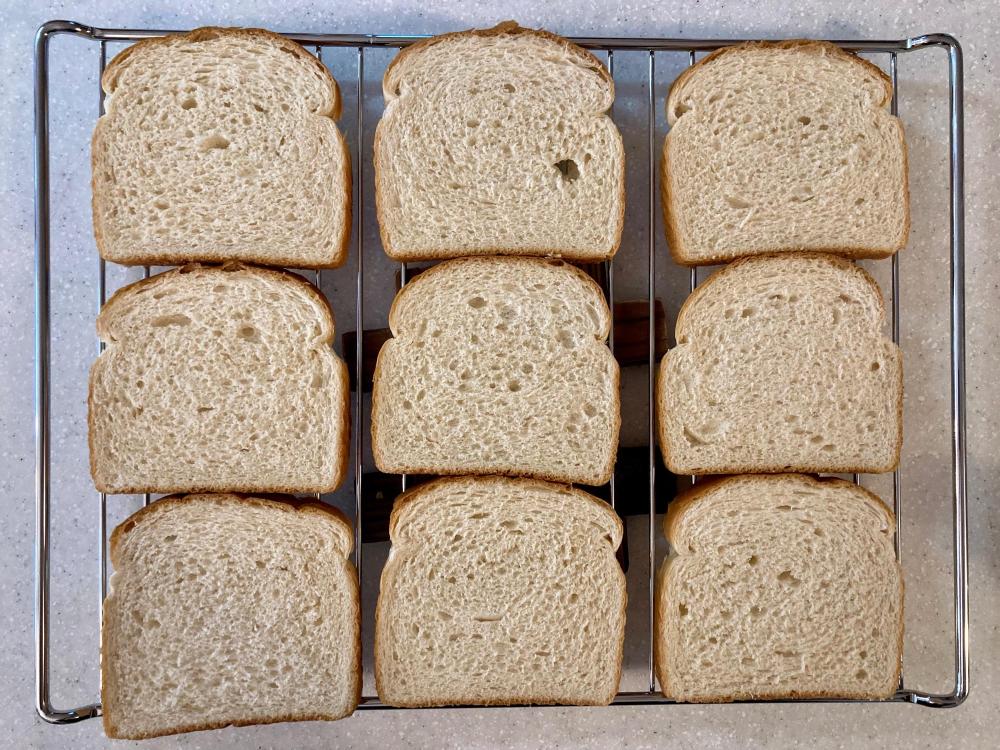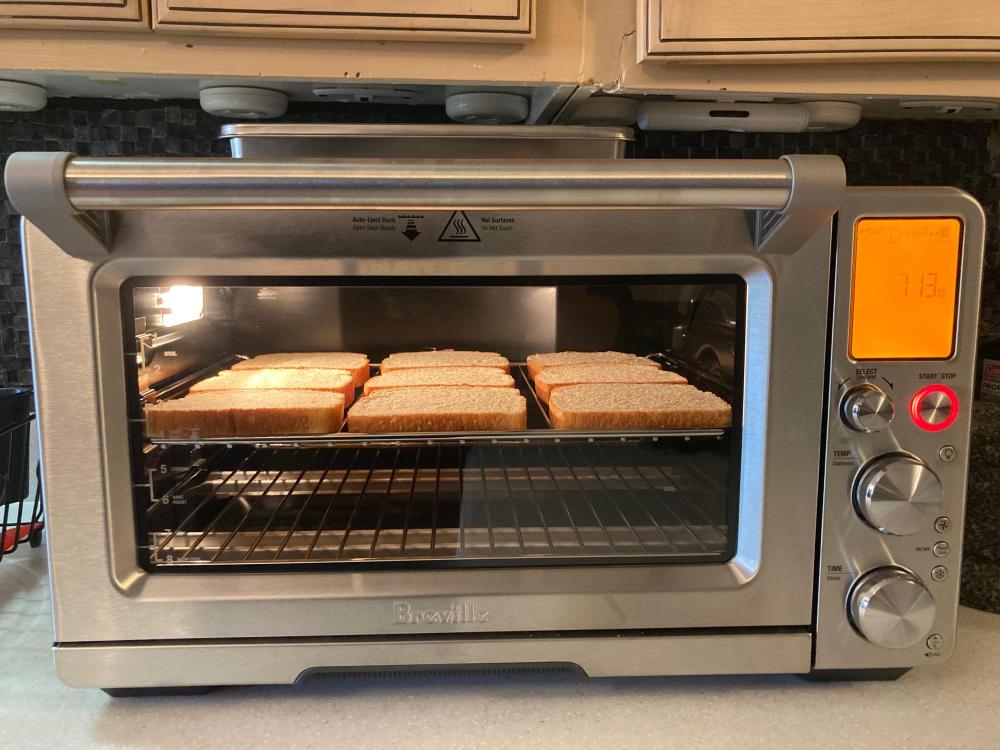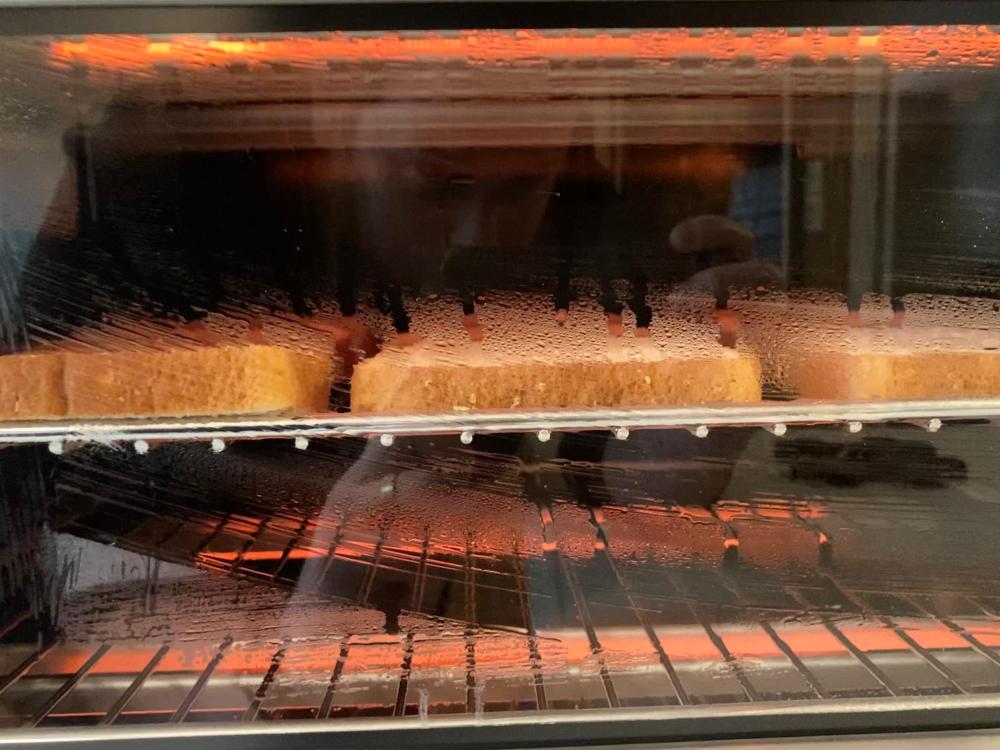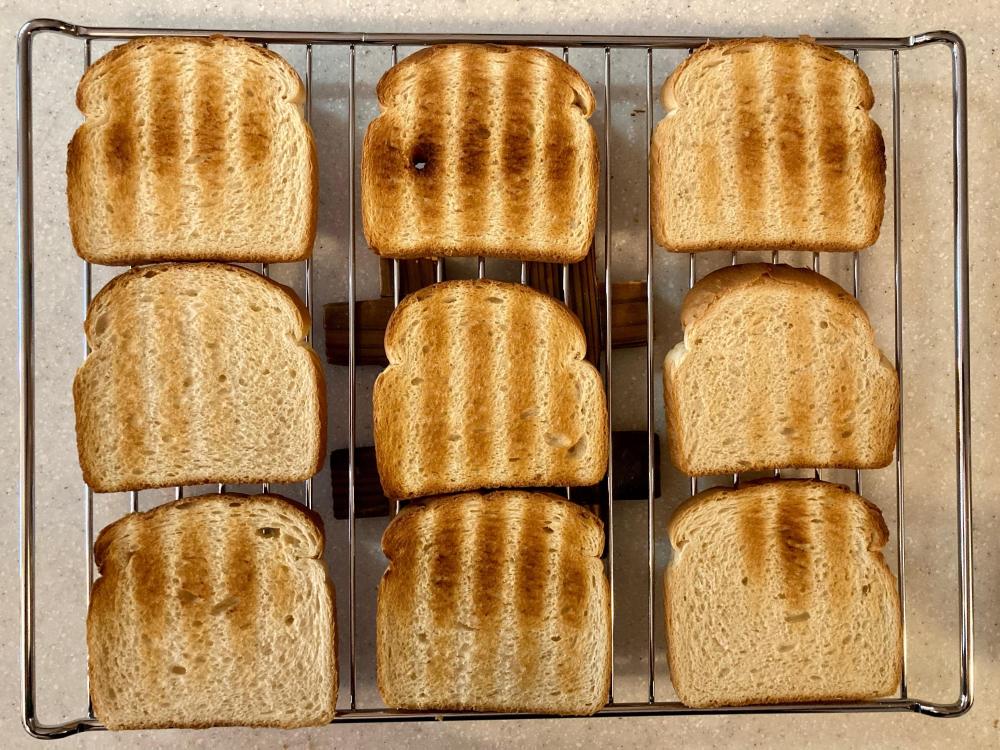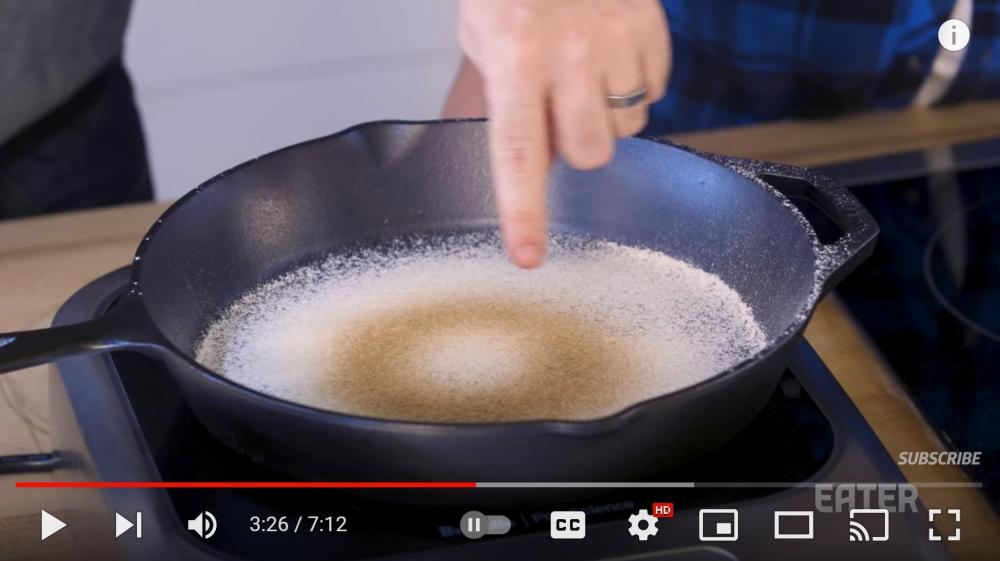-
Posts
1,807 -
Joined
-
Last visited
Content Type
Profiles
Forums
Store
Help Articles
Everything posted by btbyrd
-
Isn't it a little early to be Christmas shopping?
-
Inexpensive Korean spicy instant ramen (ramyun).
-
-

Serious climate- and health-related concerns about gas stoves
btbyrd replied to a topic in Kitchen Consumer
Again, this is mostly a ventilation problem and not a gas problem. Good fans are quiet and best placed at the far end of the vent, making noise considerations moot. But consumers don’t know about this and contractors don’t care, so finding home kitchens with adequate ventilation regardless of cooking fuel is almost impossible. I cook a lot of things outside for this reason. Now if you’ll excuse me, I need to go sear a steak on a butane burner in my back yard. -
Those TFals are pretty light, but work fine. But mine was so light that it caused a problem when I was using it on my Vollrath Mirage Pro. I like to do a slow scrambled egg by setting that to 65C, but the TFal was so light that the pan got overheated and smelled like burning Teflon before the temp sensor knew what was happening. I had much better results with the now discontinued Anolon Nouvelle Copper nonstick pans, which are much thicker. Slower to respond, but more even and able to deliver a decent sear on account of the thermal mass.
-
Conductivity matters more than thickness (cast iron is thick but is super uneven) but I get obvious persistent hot spots on all the induction hobs I've used, even with conductive cookware like All Clad D3 and Copper Core and super thick All Clad D7.
-
Wonder Bread Toast Trials. Pretty much accords with what I'd seen elsewhere online. I toasted 9 slices on setting "5" out of 7. There was quite a lot of steam generated inside the oven during toasting. Before toasting. After toasting. Not terrible, not the best. About what I expected. I think that six slices placed in the middle 2/3rds of the oven would be the best bet for toasting a lot at once. Some people reported needing to flip their toast halfway through, which I guess I can understand. It's was less toasted on the bottom relative to the top. The oven rack is pretty sturdy, so you get some intense reverse grill marks. But it eats just fine.
-
We recently had our first child and the knife shrine is no more. But my little boy is adorable and I don't miss those stands, cool though they were.
-
I don't know how induction coils really work, but it seems like the size of the coil and the size of the hot spot in the pan are not the same. Like really not the same. That brown spot in the Control Freak flour test is not nine inches across. And there's always a cold spot in the middle too. I'm surprised that the Control Freak is as accurate as it is given that its temperature sensor is in that cold zone.
-
As others have said, carbon steel and cast iron are kind of garbage technologies to use with induction. All 1800W induction burners have coils that are too small to use with large cast iron pans. There's an XL Max Burton that has a kind of bigger coil, but it's still not big enough to use with poorly conductive materials like cast iron and carbon steel. Here's a screenshot of the Control Freak flour test from this video: I have a Vollrath Mirage Pro and still get big hot spots even with more conductive cookware like All Clad Copper Core and D7. It's just the nature of the beast. I like induction cooktops in theory, but most of them suck in practice.
-
-
After my wife decided that she likes the show, we're binge watching all the old seasons on Peacock.
-
I went all in on the 900, but I can understand needing something smaller in NYC. But I think that toastwise, smaller is likely better (more even and closer to the elements). Really, it's hard to beat a dedicated toaster. But since I wanted something more akin to a secondary (or primary) oven, I went big.
-
Thanks! And congrats on your purchase as well! I'm a bit jealous of the Joule functionality and am excited to see where it goes from here. Please keep us posted! My new Breville is also replacing a Cuisinart -- a lower end model we got 13 years ago when we got married. That was in a world before "smart ovens," and while this one does a halfway decent job of warming up Bagel Bites, it's definitely more toaster than oven (and it's a kind of lousy toaster at that). So happy to have something that's bigger, has convection, and has good temperature control. The high speed "air fry" modes are also welcome, even if I hate the phrase "air fry." Will do! I'll even buy a bag of Wonderbread for the team to make that toast demo happen. I think from what I've seen, the toasting function is a bit darker in the middle of the oven and cooler near the edges... but I'll be sure to report back with some sample photos.
-
If Traeger ovens were all one cubic foot, well-insulated boxes containing a high speed convection fan, I don't think there'd be much of a market for using a wireless probe to measure the ambient temperature inside them. But the ones they actually sell are comparably drafty large cylinders that don't heat nearly as evenly as a something like the BSO or APO, so having multiple probes measuring ambient temperature at different points inside the oven is not the worst idea. I think the main thing though is that people hate wires in this day and age. If you can pop multiple probes in multiple pork butts and monitor them on your phone inside the house, that's a much nicer situation than having to go check on your wired probe every 30 minutes or whatever. Anyway, I see the appeal of using a wireless probe in the Joule Oven, but again am not super sold on how beneficial having a probe that measures the ambient temperature would be (assuming that the oven is as accurate as it seems to be). The Combustion unit's multiple sensors and predictive timing is a different story altogether. It'd be cool if they could integrate that with the Joule Oven software, but I'd never buy anything on the basis of unannounced features based on the promise of updatable firmware. I will follow the development of the oven and app with much interest, but I just pulled the trigger on the non-Joule version which I'd been planning on buying anyway. With the sale price, I couldn't see paying the 43% premium right now. Maybe in a year or two I'll upgrade.
-
I'm sure there are. I'm just saying that if you have a well regulated environment controlled by a PID, having an additional widget measure ambient temperature isn't going to tell you anything new. It'd be like having an extra thermometer reading the temperature of a sous vide bath when there's already a thermometer measuring that temperature in the circulator. The Breville ovens have excellent temperature control. If I set them to 350F, I don't know that I'd want or need an additional gizmo to tell me that the oven is set to 350F. Maybe some people would find that information worth paying for, but a smart thermometer is of diminished utility in a smart oven (or on a Control Freak, or for use with a circulator). Pellet grills are larger and more prone to having hotter and colder zones, so that's kind of a different ballgame. But I take your point... different strokes for different folks. If people have the Joule Oven and also have a Combustion probe, it'd be cool to use them together. But I think the number of people who would buy Chris Young's thermometer just to use with the Joule Oven is quite small.
-
I don't really see the need for a probe that monitors ambient temperatures in tightly thermostatically regulated environments like a PID controlled oven, water bath, or induction burner. And while the Combustion Inc thing seems cool with its many sensors and predictive timer/app, it's also $200 and I'm passing on that. (It's also still kinda vaporware, but global supply chains are screwed and I'm not blaming Chris Young for that.) I don't know that anyone is going to shell out $700 so their $350 toaster oven can have a probe and an app. Or maybe they would. I can't say. Speaking for myself, I guess it'd be cool to have, but as with the $150 premium on the Joule Oven over the non-Joule version of the same oven, I don't know that the unique value proposition of that setup is especially high.
-
And the new Polyscience Hydropro Plus circulator.
-
You can also get the Joule Oven in a black and red color scheme for an added $50, but that black finish is going to be harder to maintain than shiny stainless over time. And if you're spending $550 and want a black smart oven, you might as well spend the extra $50 and get the APO. It's got steam, it's got a probe, and it's capable of true low temperature cooking. The PID on the Breville seems to be accurate to +/- 5 degrees F, which might not be a big deal if it spends roughly the same amount of time over and under... but you're still working with dry bulb temperatures and any protein cooked in there will be meat-sweating itself to cooler temps... so it's not really going to be safe to try to do sous-vide-esque low temp cooks in the Breville. But that's not really the point of the unit anyway. I for one would not expect the Combustion Inc. thermometer to work with the Joule Oven at any point. I guess that'd be cool, but I don't see Breville taking the time to integrate a niche third party accessory into their product. Now if Breville came out with their own cheap wireless probe thermometer, that'd be something. I think they missed an opportunity by not integrating a probe. Or adding steam. Oh well.
-
The Joule Oven the exact same product as the Breville Smart Oven Air Fryer Pro but it has wifi and an app with recipes. You can download the app yourself and see what's on offer. The app can "run" recipes that have multiple cooking stages, but as of right now you cannot program your own recipes and have them run "on autopilot." I assume they'll add this functionality sometime, but maybe not. The SOAFP is on sale right now for $350. The Joule Oven is $500. That's a 43% premium for added wifi and an app with little content as of yet. I have faith that there's going to be a lot more recipes added in the coming years, but I don't think the value proposition right now is worth the very significant expense. I also think it's stupid to introduce a new flagship model at full price and put an otherwise identical model on sale at the same time. The Joule Oven is available exclusively through Breville and Williams-Sonoma. I have tried in vain to find discount codes that would help make the oven cheaper.
-
You can look inside on Amazon UK.
-
The Aviary's book "Zero" focuses on alcohol free cocktails, as does Salway and Water's book "Redemption Bar (eG-friendly Amazon.com link)."
-
I'm going to buy a smart oven sometime soon and I've been following the major contenders for a few years. I was intrigued by the CSO, but it's too small for my desired use. I've been waiting for a "CSO Plus" that's large enough to hold a quarter sheet pan and tall enough to accommodate two racks, but that does not seem to be forthcoming. The APO is certainly large enough (possibly too large for me), it's expensive (though justifiably so), and doesn't really toast (womp womp). I've thought about getting both the APO and a Bit More Toaster, as it seems like a killer combo, but that's a bulky and pricey proposition. I also am under the impression that steam ovens seem to develop faults and be less reliable than other countertop ovens. So now I'm leaning strongly toward the BSOAP which is spacious, has good convection, seems to be relatively reliable, and makes decent toast (at least toward the middle of the oven). And while it's expensive at $350 (on sale), it's still a far cry from the $700+ I'd have to shell out for the APO and a dedicated toaster.
-
I don't know that there's much of a place for heavy cleavers in the home kitchen. Or in a professional kitchen. Or even a butcher shop. (Most butchers that need to cut through bone are going to use a saw.) The one place where I think a more robust cleaver may come in handy is in finishing some Asian poultry preparations that involve cutting (hacking) cooked chicken or duck legs... but apart from those, I can't think of when I'd use one. I do know that if I *did* want to get one, I'd buy one of the heavier CCK cleavers like their bone chopper. In my kitchen, the thing that's closest to a cleaver and does all of my dirty jobs is a Tojiro DP 240mm western deba. It's shaped like a French chef's knife, but it's half a centimeter thick and weighs almost a full pound. It slays.



